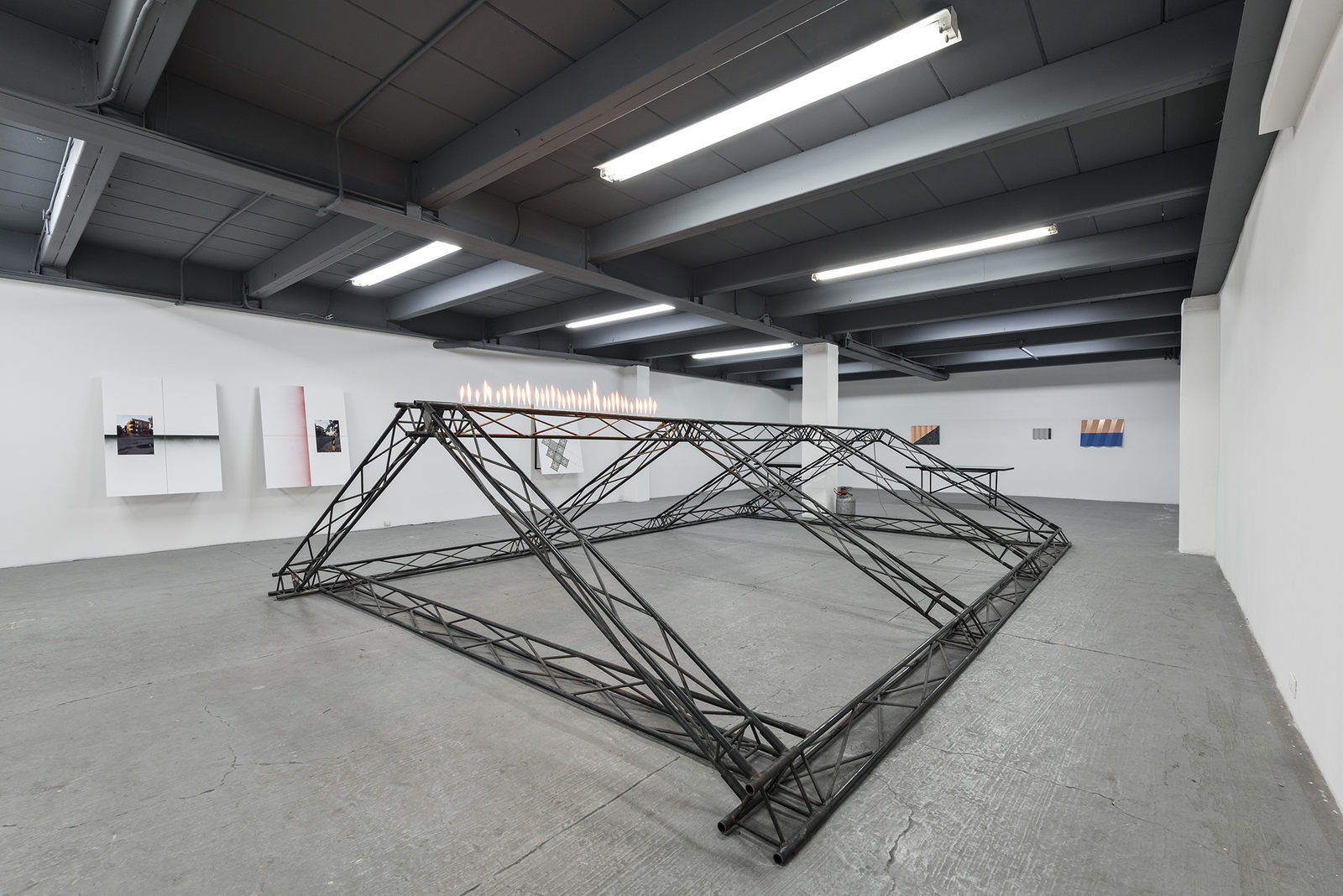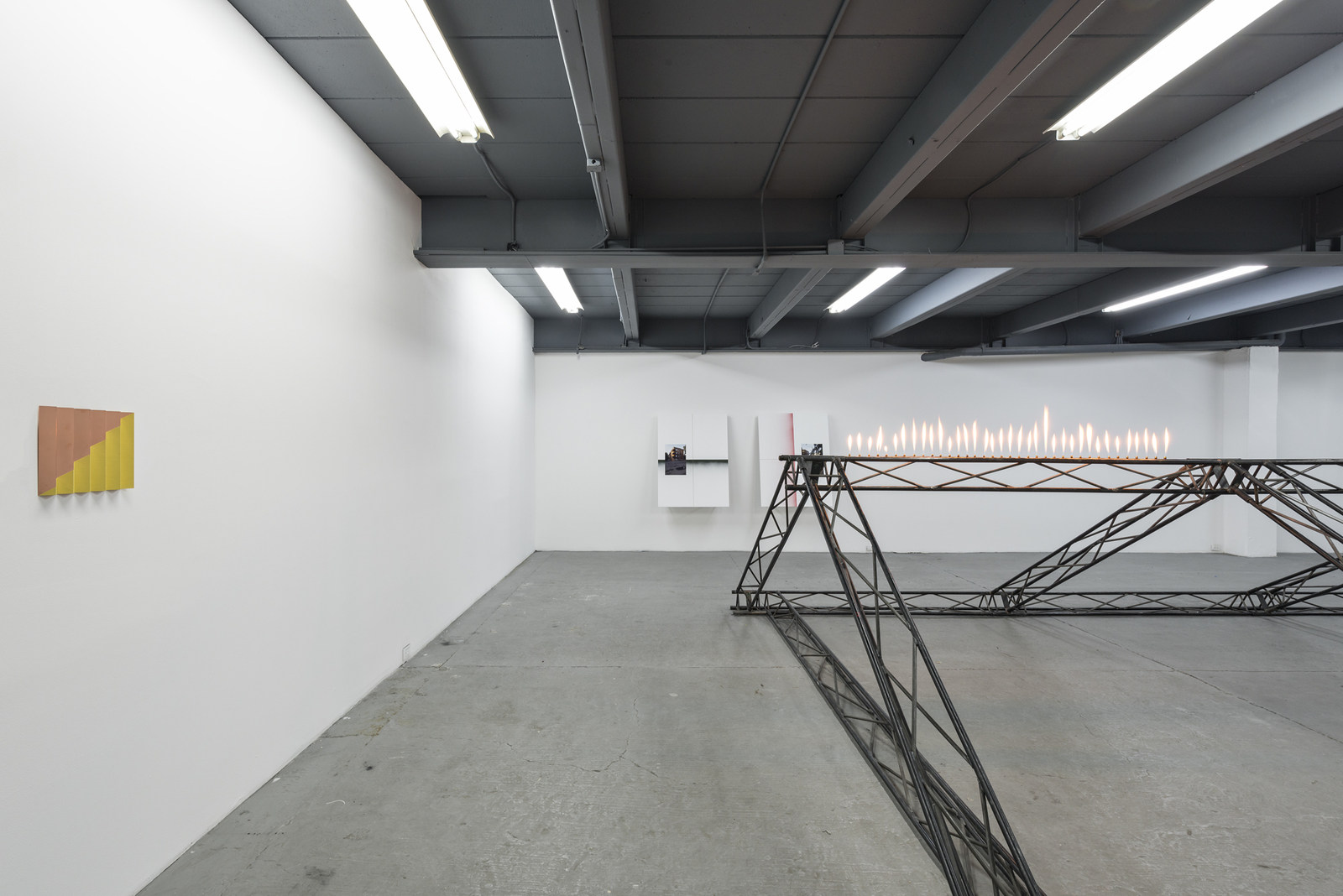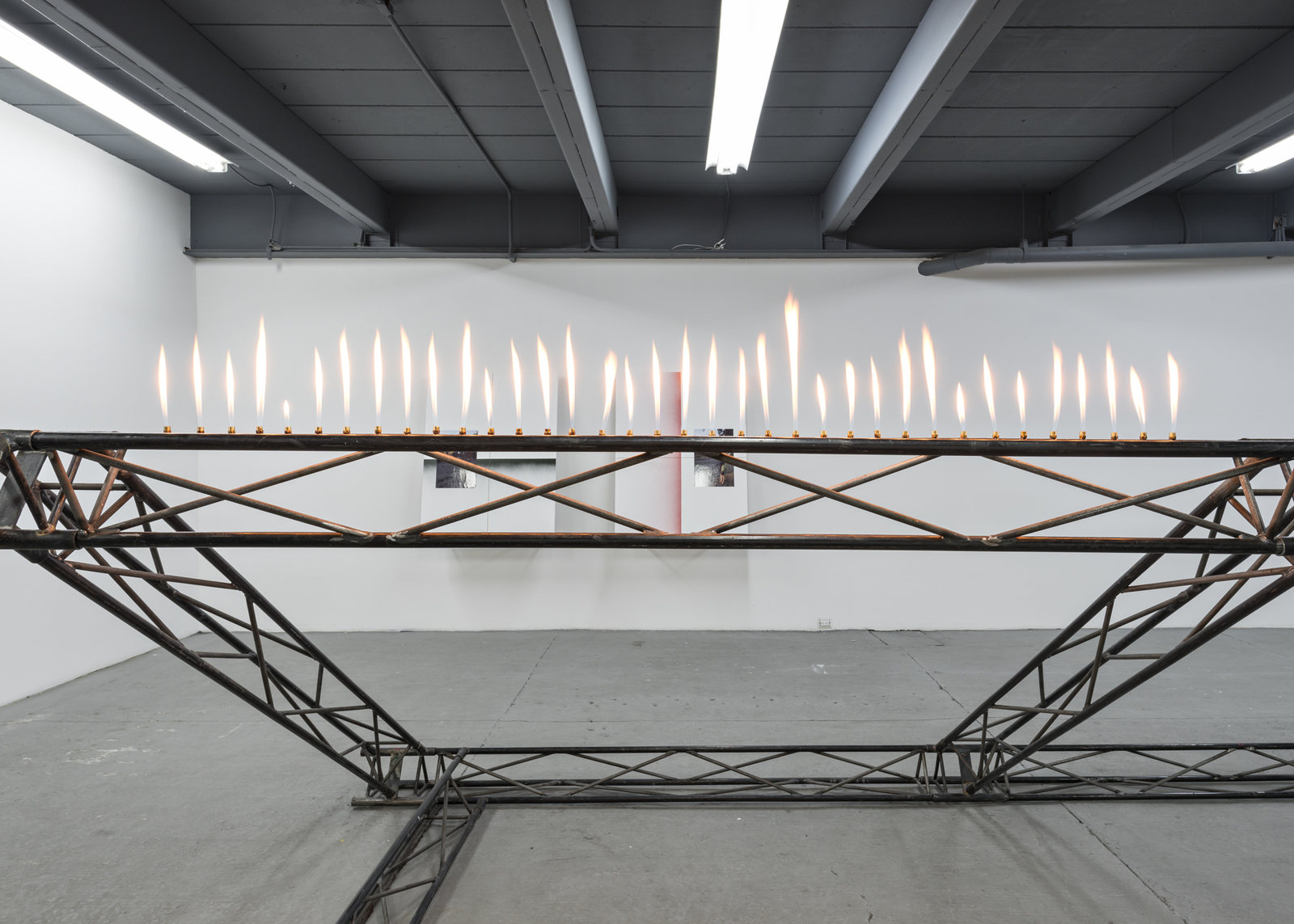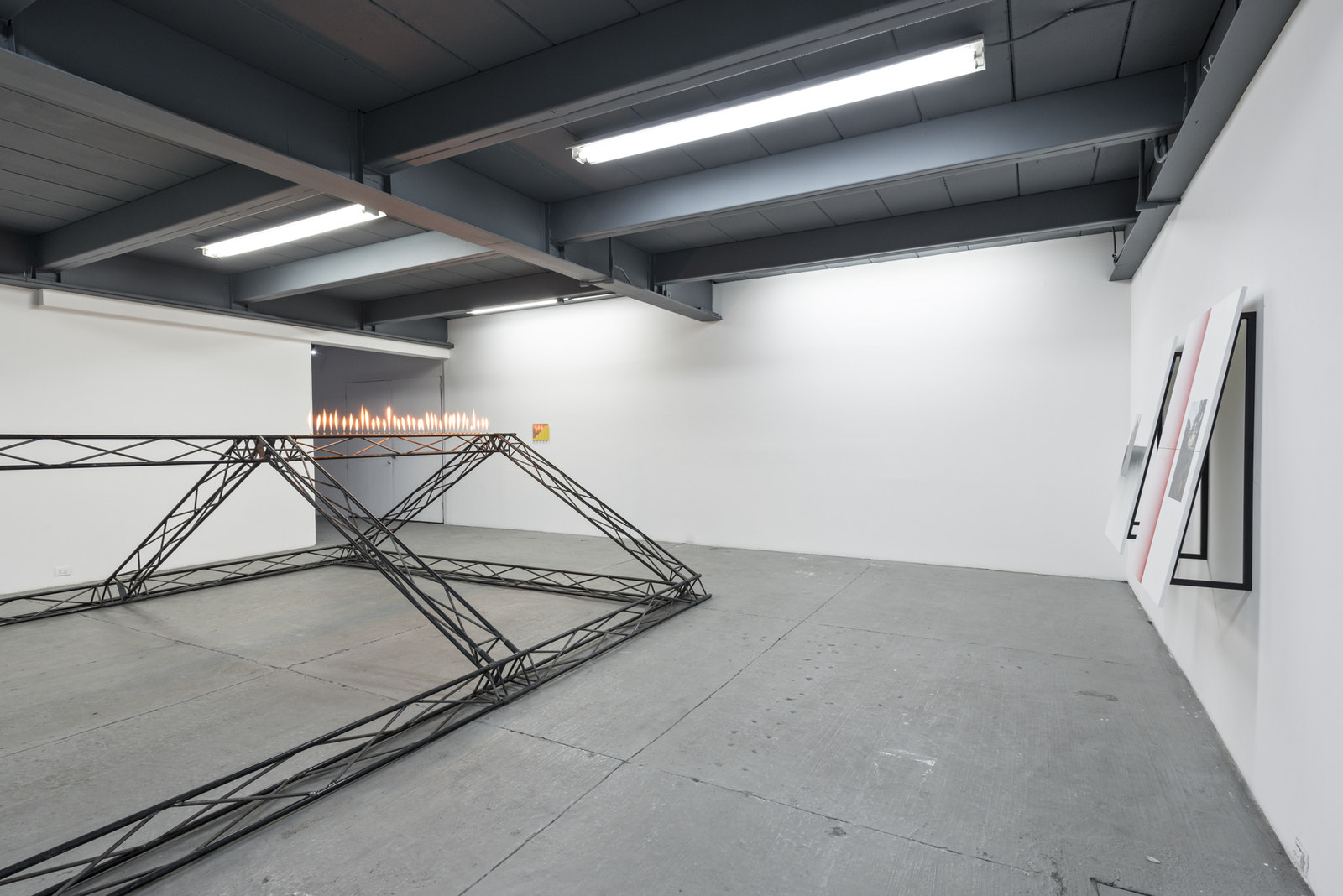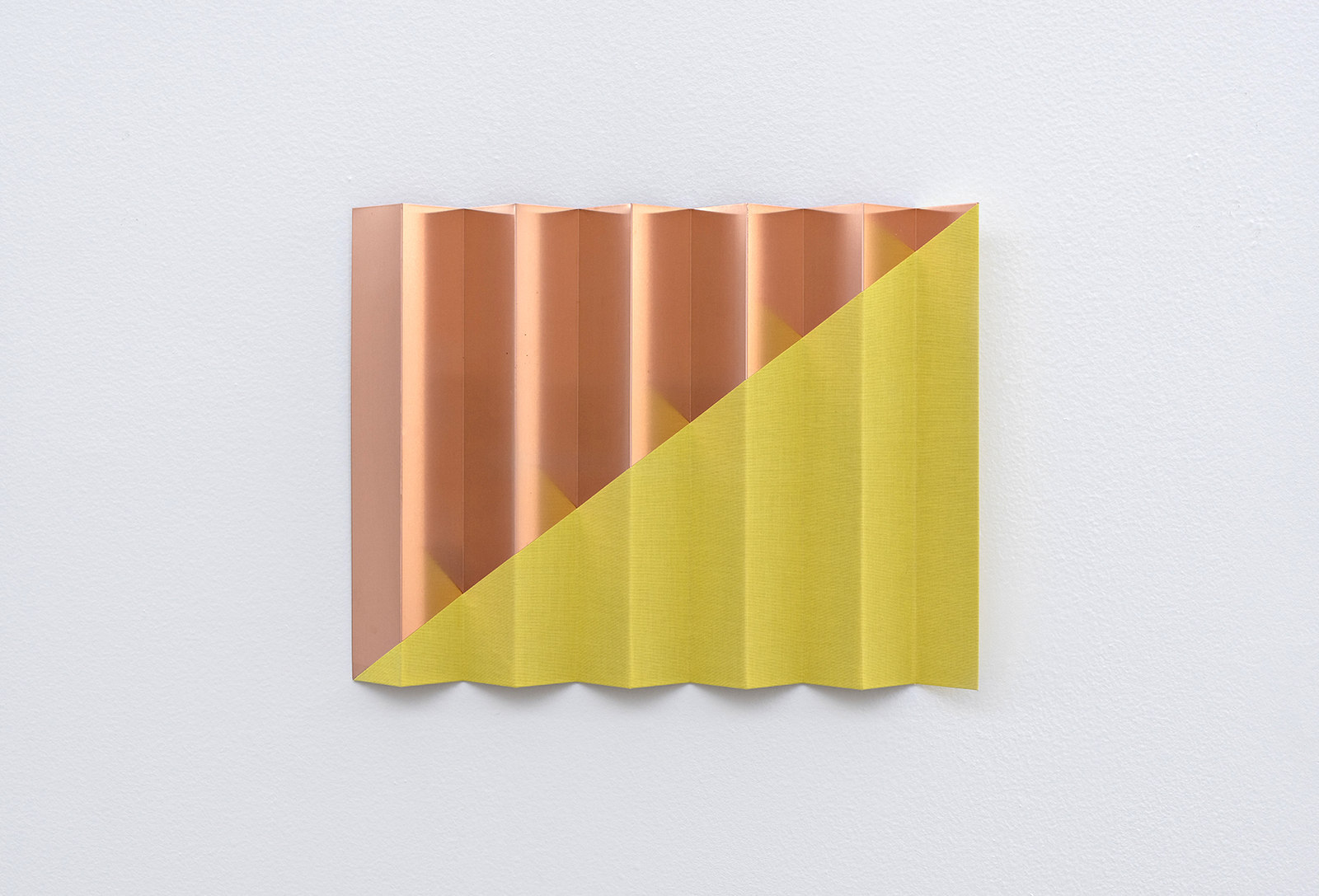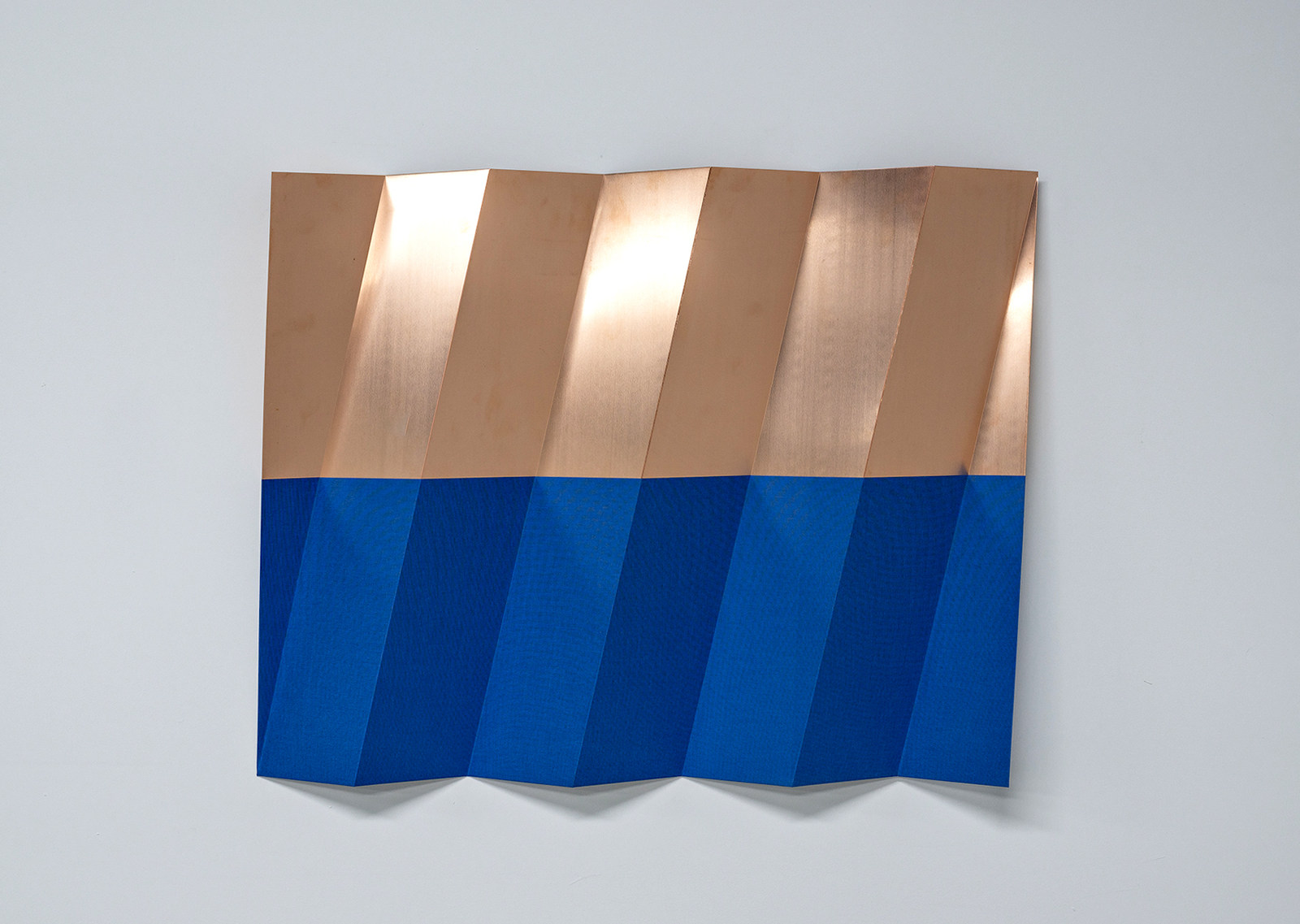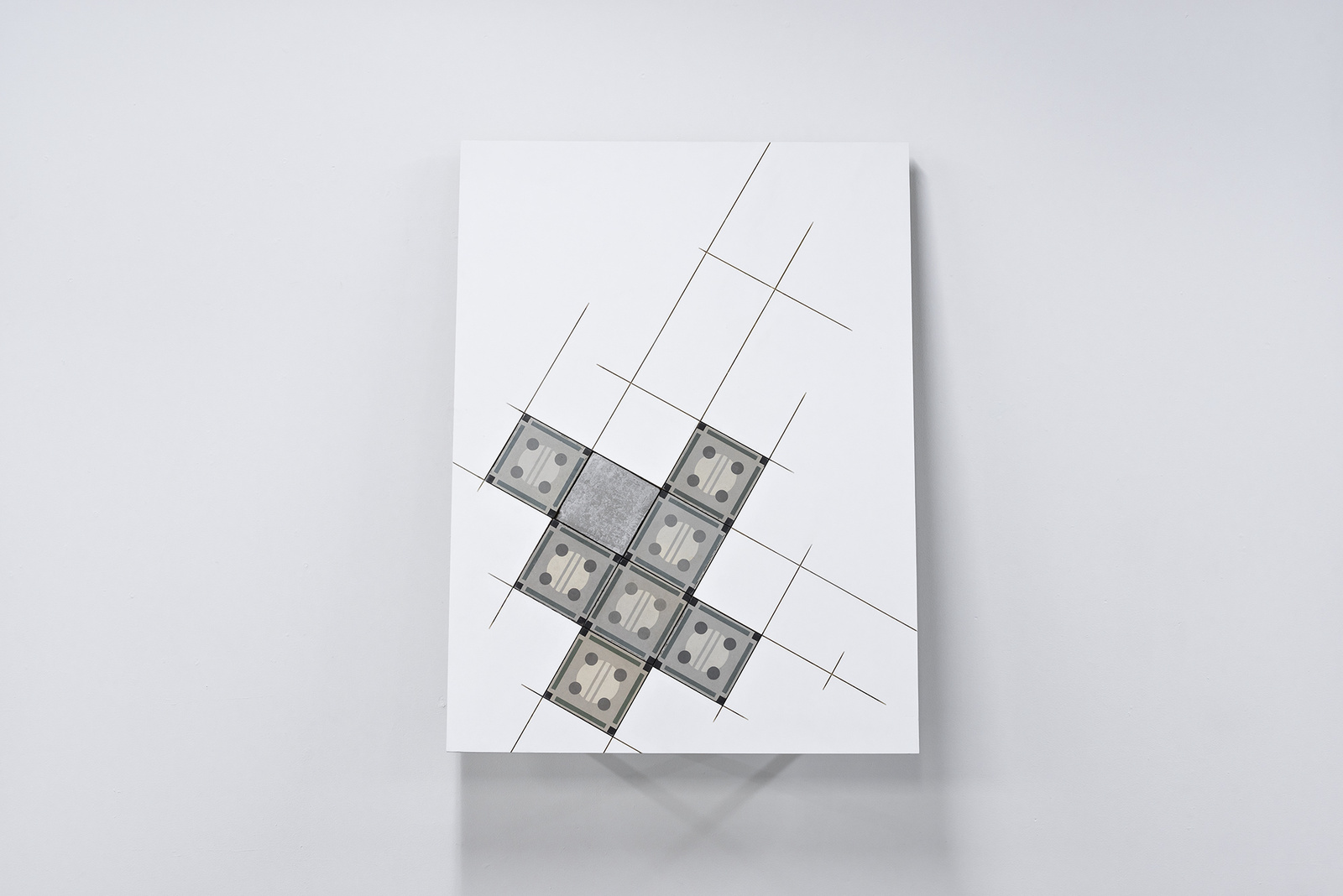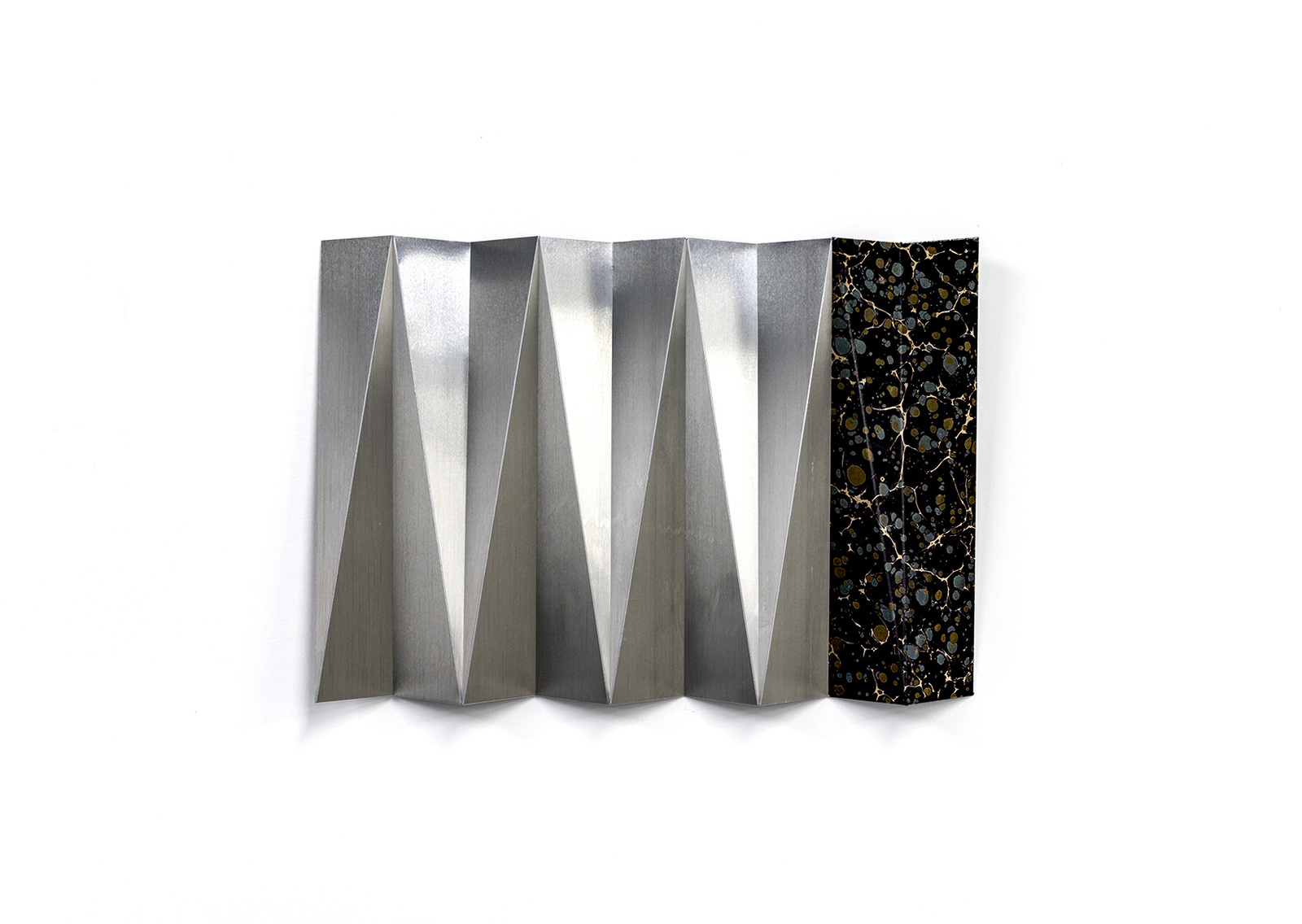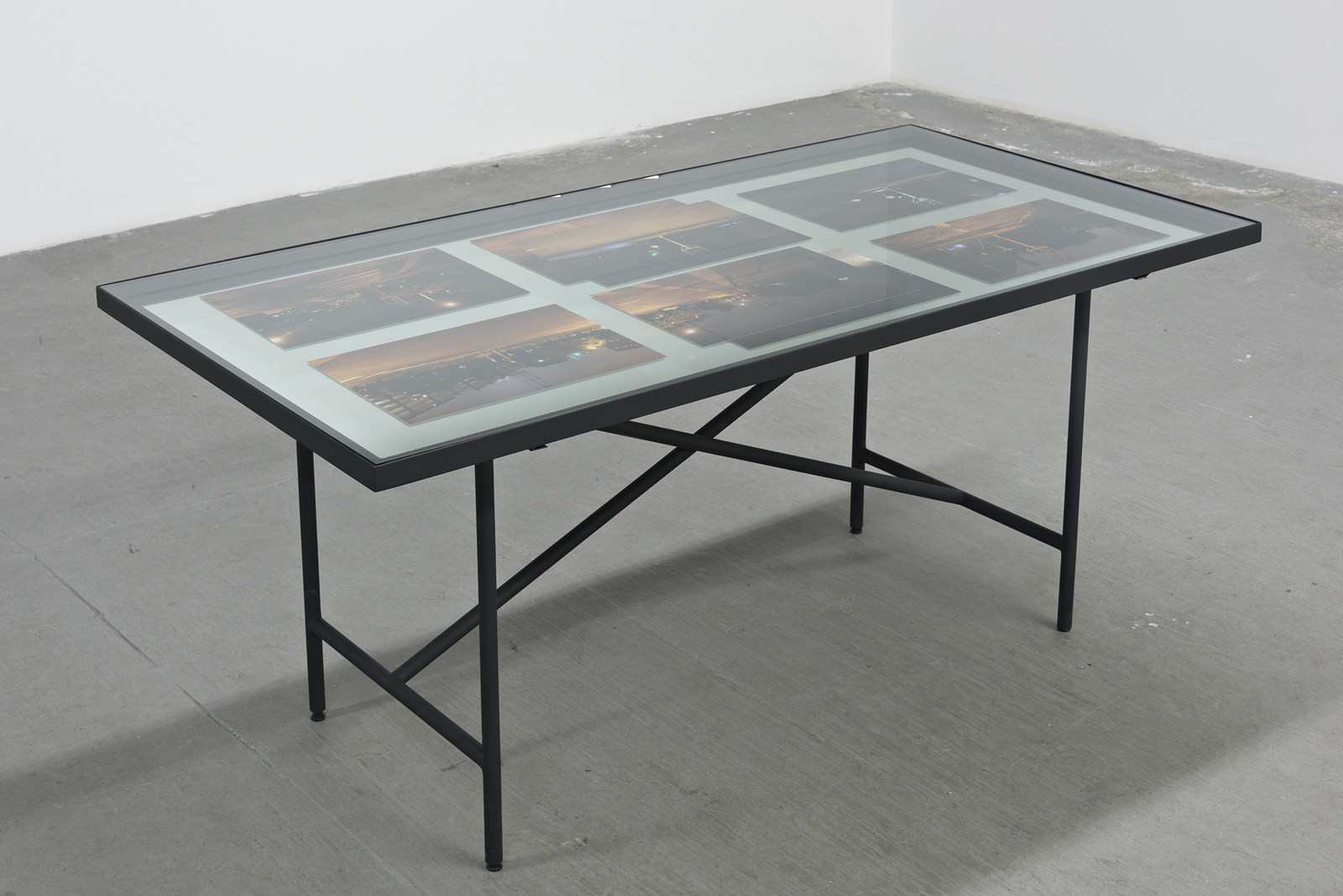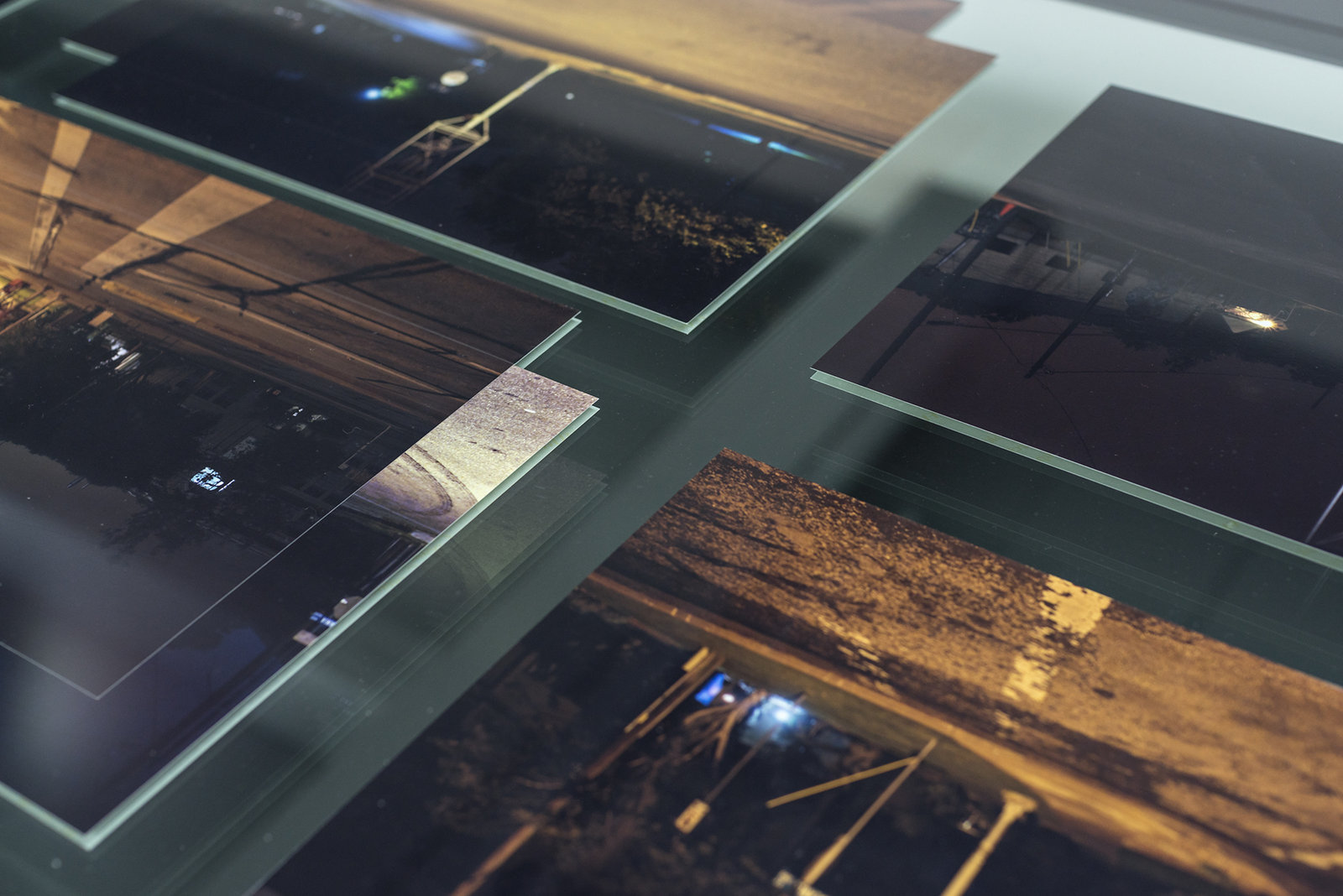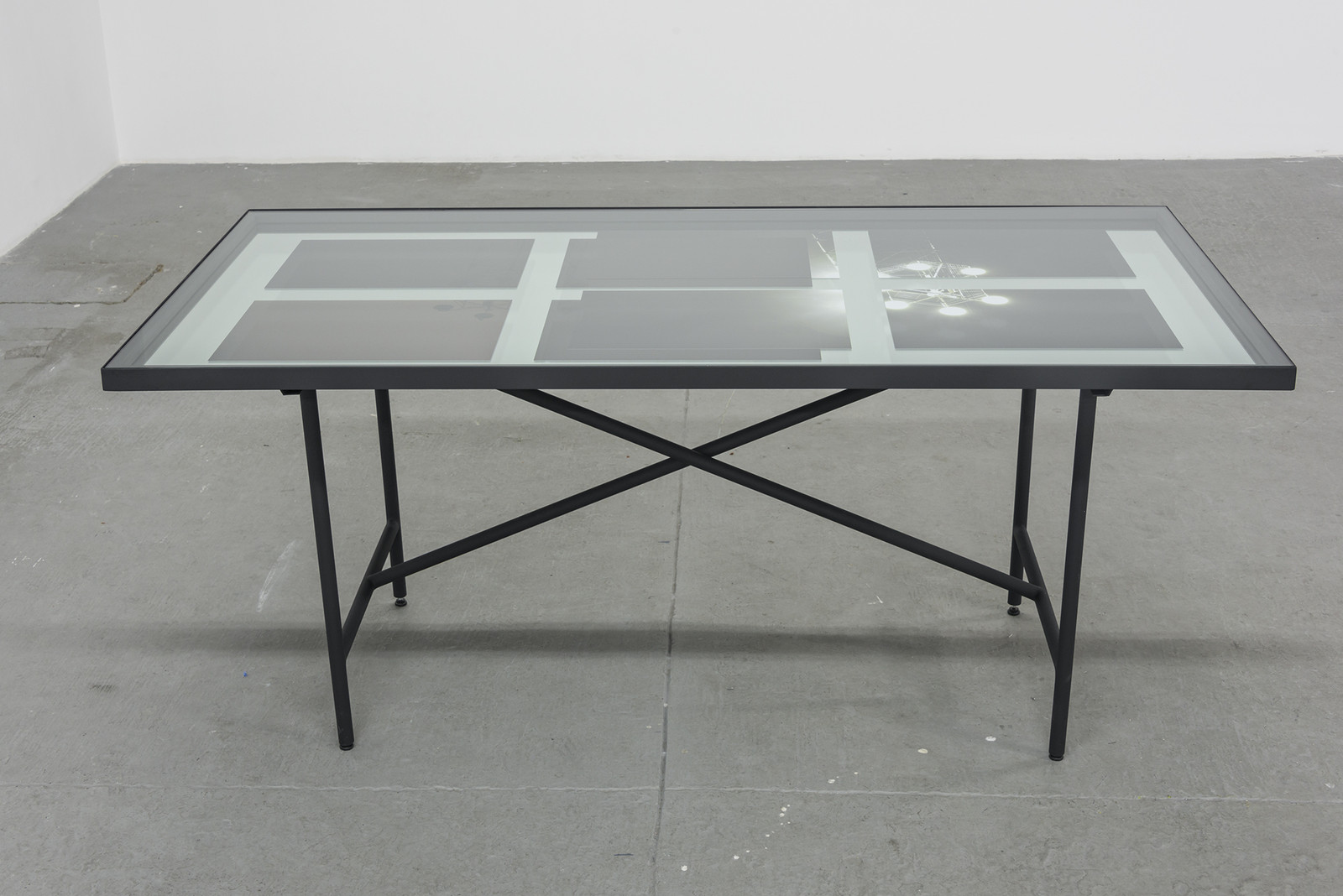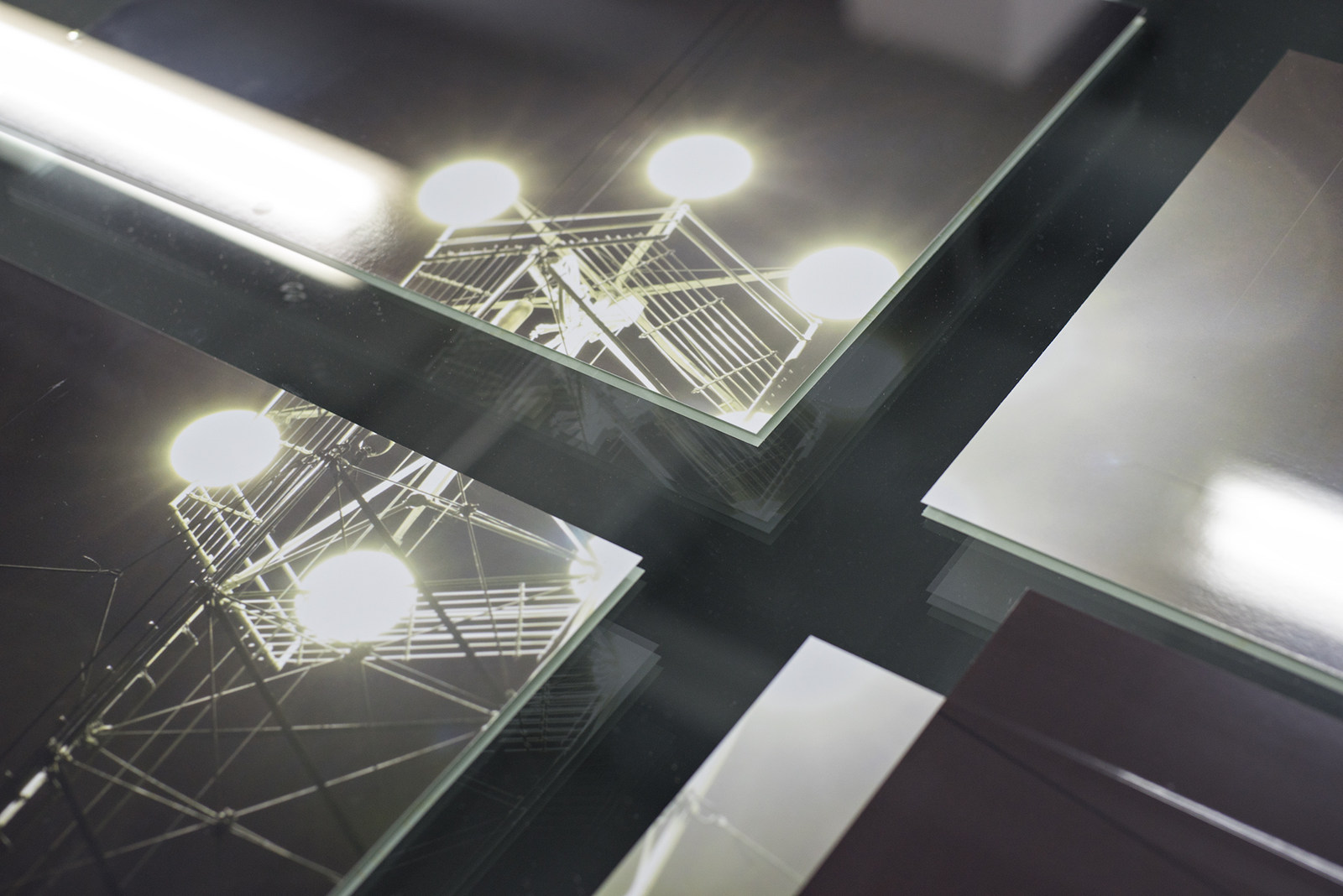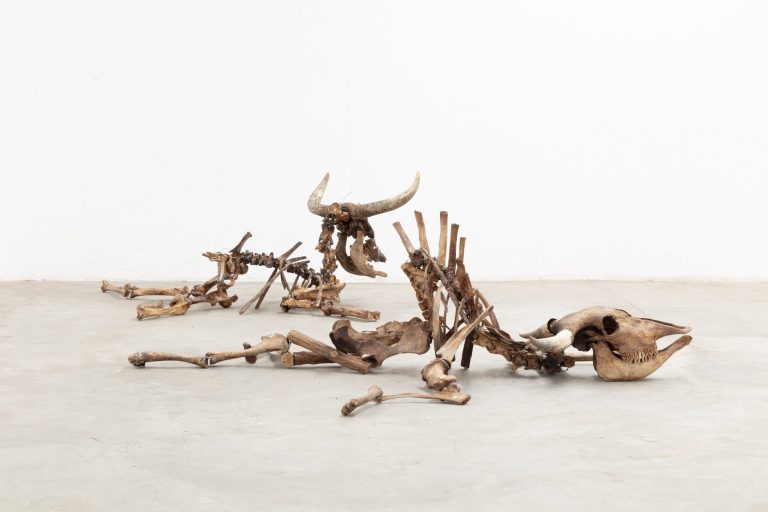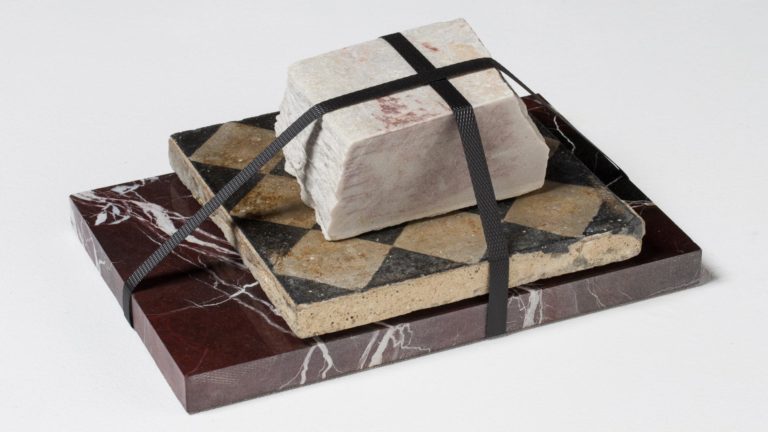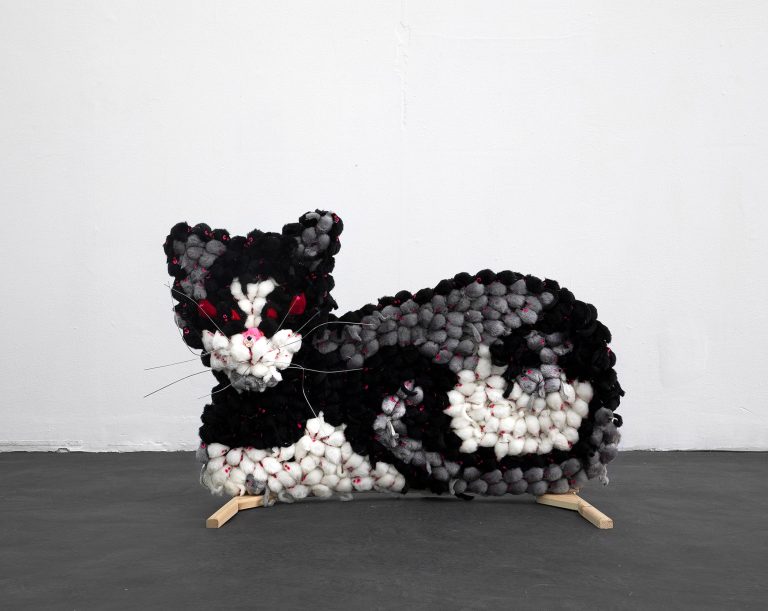Artist: Andreas Fogarasi
Exhibition title: Sculpture
Venue: Proyectos Monclova, Mexico City
Date: November 11, 2016 – January 14, 2017
Photography: Patrick López Jaimes, all images copyright and courtesy of the artist and Proyectos Monclova, Mexico City
«I think that what I want to create is documentary sculpture», explained the artist Andreas Fogarasi in relation to this exhibition. With a clear interest in how architectural elements play a social, cultural and political role in the city, the exhibition Sculpture opens a new chapter in his approach to the relationship between objects, surfaces and spaces that clandestinely shape our gaze and behavior. The series of works presented at PROYECTOSMONCLOVA are drawn from almost imperceptible urban structures and designs that Fogarasi has sagaciously selected to transform into different entities.
These simple civic features such as roofs, slopes, angles and walls have been magnified and at the same time scaled down by the artist to function as footnotes to the metropolis. Yet, his interest is less to create an index of images and more to rely on the possibilities of form as text. Fogarasi is thus creating an alphabet that unfolds a number of references. The first impression is that whilst the sculptures such as the ones based on roofs have a strong influence from geometrical abstraction, the tables with mirrors are minimal in essence. Nevertheless, in each work, the artist develops far more complex connections between historical periods, art movements, ornamentation, spectacle and architecture. Furthermore, each sculpture is a strong statement about materiality: a topic that has become relevant again since modern art together with the medium, the object and its physicality.
When Fogarasi blends copper with bookbinding cloths in his series Roof Studies, he is declaring architecture as a readable form and vice versa: the book as an architectural object that can be shaped and built. With an apparent hint to the aesthetics of Russian Constructivism and possible traces of the Vienna Secessionists, the book patterns have also been carefully selected to resemble construction materials such as stone, cement or the standard marbled pattern that has been used since antiquity for decoration in book handicraft. The word «studies» is also relevant here as it suggests that the works are part manuscripts, part architectural scale models or mock ups.
These ideas are further developed in the mirrored tables, which besides reflecting the gallery’s roof, function as surfaces to display photographs of the Moonlight Towers in Austin Texas. These landmarks from the 19th century have an echo in the central work The Roof is on Fire, a «dysfunctional piece of entertainment architecture» –as it has been described by the artist— and which could trace a genealogy beginning with the provisional constructions at World Fairs to the fire pieces of Yves Klein which have had an acknowledged influence in Fogarasi. Ultimately, the exhibition Sculpture is about tracing trajectories and making cross-references between the physical, conceptual and editorial parts of a book and the different stages and purposes of architecture. In between, the artist inserts postscripts and addendums. As a result, sculpture is a topic that is critically used as a scaffolding to write and display different arenas for onlookers and spectators.
-Andrea Torreblanca
Andreas Fogarasi, Sculpture, installation view, 2016
Andreas Fogarasi, Sculpture, installation view, 2016
Andreas Fogarasi, Sculpture, installation view, 2016
Andreas Fogarasi, Sculpture, installation view, 2016
Andreas Fogarasi, Sculpture, installation view, 2016
Andreas Fogarasi, The Roof is on Fire (detail), 2016
Steel, propane gas bottle, 168.5 x 469 x 731 cm
Andreas Fogarasi, Study Desk (Susanne Kriemann photographing Ernst May, Magnitogorsk, Russia), 2016, Diptych: plywood, wall paint, steel, spray paint, digital c-prints, 135 x 100 x 29 cm
Andreas Fogarasi, Roof Study 18, 2016
Copper, bookbinding cloth, 25 x 33 x 2.5 cm
Andreas Fogarasi, Roof Study 17, 2016
Copper, bookbinding cloth, 60 x 74.5 x 6 cm
Andreas Fogarasi, Study Desk (Eight floor tiles, one missing, Schwadron Brothers, Vienna, ca. 1910), 2016, Plywood, wall paint, steel, ceramic tiles, 135 x 100 x 29 cm
Andreas Fogarasi, Study Desk (Eight floor tiles, one missing, Schwadron Brothers, Vienna, ca. 1910), 2016, Plywood, wall paint, steel, ceramic tiles, 135 x 100 x 29 cm
Andreas Fogarasi, Roof Study 19, 2016
Aluminum, marbled paper, 25 x 36 x 2.5 cm
Andreas Fogarasi, Moonlight Towers, 2016
Mirror, glass, steel, digital c-prints, 79.5 x 181 x 91 cm (each)
Andreas Fogarasi, Moonlight Towers, 2016
Mirror, glass, steel, digital c-prints, 79.5 x 181 x 91 cm (each)
Andreas Fogarasi, Moonlight Towers, 2016
Mirror, glass, steel, digital c-prints, 79.5 x 181 x 91 cm (each)
Andreas Fogarasi, Moonlight Towers, 2016
Mirror, glass, steel, digital c-prints, 79.5 x 181 x 91 cm (each)


